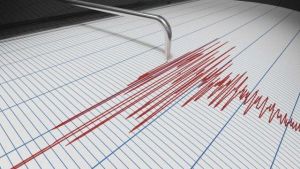JAKARTA - The Coordinator for Earthquake and Tsunami Mitigation of the Meteorology, Climatology and Geophysics Agency (BMKG) Daryono said, Indonesia experiences about 5.818 earthquakes per year.
This was revealed by Daryono in a socialization webinar on earthquake and tsunami mitigation for at-risk areas, Wednesday, March 16. And the data was taken since 2008.
He said significant earthquakes with magnitude (M) 5.0 and above occur 350 times per year.
"Earthquakes damage an average of 10 times and once every two years a large earthquake has the potential to cause a tsunami," Daryono said as quoted by Antara.
Indonesia has a number of megathrust zones as many as 13 segments in Sumatra, southern Java, Sulawesi, the Moluccas sea, and the land of Papua, where there is an oceanic plate that sinks under the continental plate.
According to him, this has implications for a lot of earthquake activity in the contact area of the zone. When these two plates meet and press against each other, there is an accumulation of tectonic stress that is so large that it can produce a large earthquake.
In Indonesia, there have been earthquakes with magnitudes above 8 more than 20 times since 1600, and more than 90 percent of tsunamis have occurred which are quite powerful, so the void zone for large earthquakes must be watched out for.
In addition, Indonesia has more than 295 active fault segments, and many are still unidentified. Active faults are formed from parts of the plate that have fractured, due to pressure and the weak parts have shifted.
"In Indonesia, 46 deadly earthquakes of this kind have occurred due to active faults. Indonesia is an area that is threatened with megathrust zones, subduction including shallow crust earthquakes due to active faults," he said.
Daryono reminded that the earthquake did not actually kill. Unfortunately, in Indonesia earthquake-resistant buildings are still rare, so when an earthquake occurs, there is a risk of damage and even casualties.
He said if there was a strong earthquake, but weak building structures and soft soil conditions, it would trigger damage.
"Every earthquake in Indonesia is followed by casualties, and we must anticipate this. The solution is related to earthquake hazards, with earthquake-resistant buildings," he said.
SEE ALSO:
The English, Chinese, Japanese, Arabic, and French versions are automatically generated by the AI. So there may still be inaccuracies in translating, please always see Indonesian as our main language. (system supported by DigitalSiber.id)

















